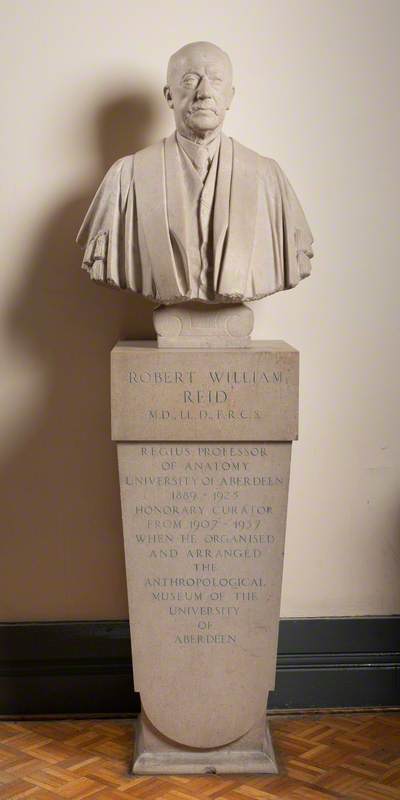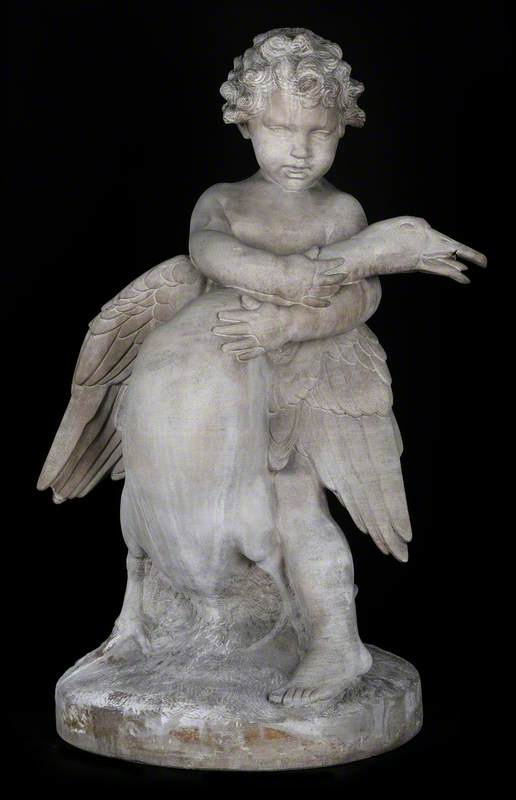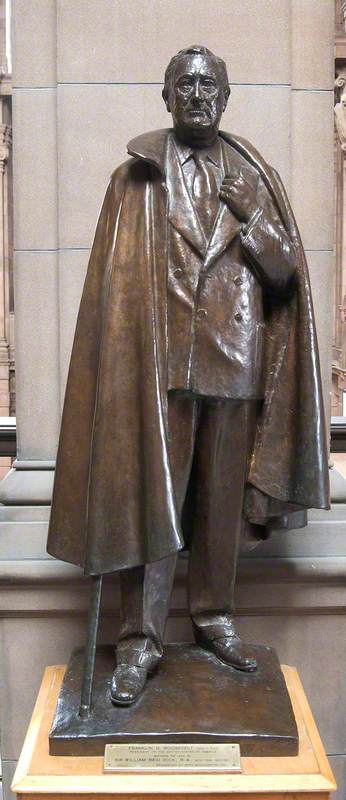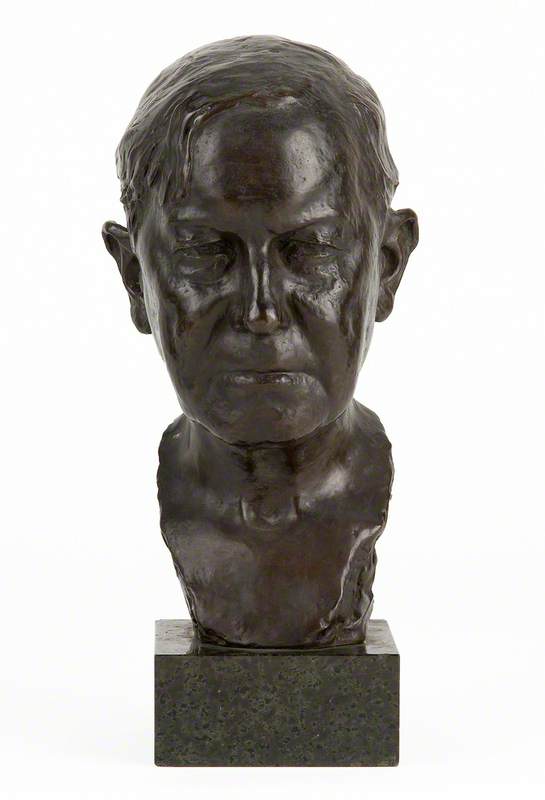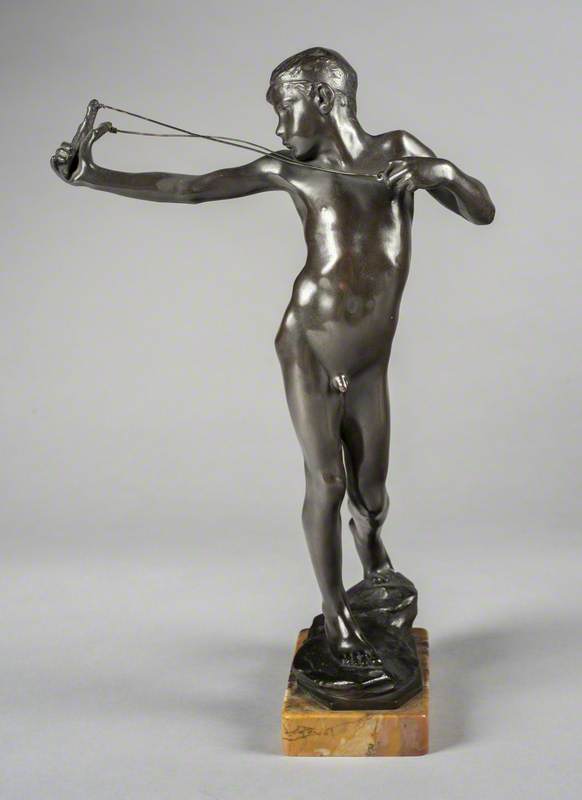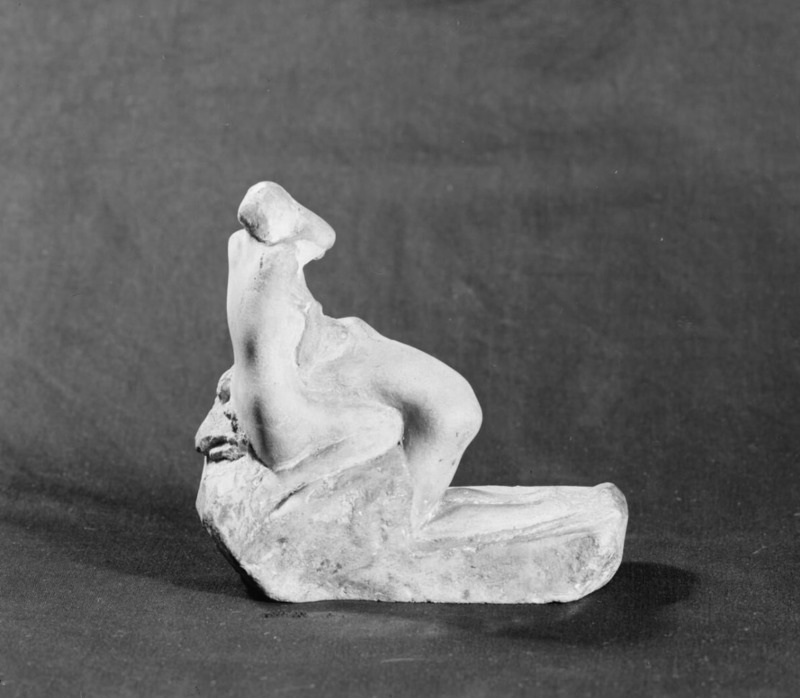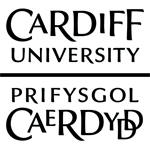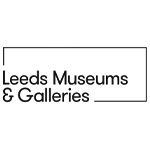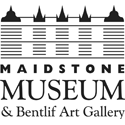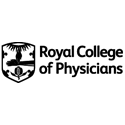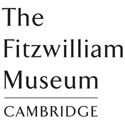William Reid Dick [also known as Sir William Reid Dick] was born in Glasgow, Scotland on 13 January 1879. At the age of twelve he was apprenticed to the Glasgow firm of stonemasons Scott & Rae with whom he received a thorough training in stone carving for five years. From 1899 to 1907 he studied intermittently in the evenings at Glasgow School of Art. During this period, he worked for a firm of stone decorators. It is unclear if this was Scott & Rae.
In 1907-08 he briefly taught art at Bell's Hill Academy in Glasgow. In 1908 he moved to London where he occupied as studio at his address was 6 Clifton Hill Studios, St John's Wood, London. Following his move to London he worked as studio assistant to the sculptor Edwin Whitney-Smith (1880–1952) and attended evening classes at the Kennington School of Art.
Within five years of leaving Glasgow Dick was a well-established artist in London. Dick first exhibited at the Royal Academy in London in 1908, and apart from a break in 1916-1918 whilst he did military service during World War One, continued to exhibit at the RA every year until (posthumously) 1942. Dick also exhibited at the Royal Society of Portrait Painters, Royal Institute of Painters in Water Colours and International Society of Sculptors, Painters and Gravers in London; Royal West of England Academy in Bristol; Walker Art Gallery in Liverpool; Royal Glasgow Institute of the Fine Arts; the Royal Scottish Academy and Royal Scottish Society of Painters in Water Colours in Edinburgh; and at the Paris Salon.
Notable commissions received by Dick included a bust of the singer and comedian Harry Lauder (1911); war memorials for Bushey and Rickmansworth, Hertfordshire (1921); the Kitchener memorial chapel (1922–25) in St Paul's Cathedral, London; an eagle for the top of Sir Reginald Blomfield's Royal Air Force Memorial on the Victoria Embankment in London (1923); a bronze head of the architect T. S. Tait (1926); a bronze head of the architect Reginald Blomfield (1928); the lion for the top of the Menin Gate at Ypres, Belgium (1927); the Leverhulme Memorial for Port Sunlight (1930); the Spirit of Welcome statue for Nottingham Council House (1931); the Arras Memorial at Faubourg d'Amiens Cemetery in France (1932) a bronze head of the artist Robert Anning Bell (1932); a bust of the architect Edwin L. Lutyens (1933); a memorial to the missionary and explorer David Livingstone at Victoria Falls, Zimbabwe (1934); a bronze head of the architect C.F.A. Voysey (1934); a memorial to George V in Westminster Abbey (1934); a statue of the Earl of Willingdon for Coronation Park, Delhi (1936); statue of George V for Howard Davis Park, Jersey (1939); a bust of Winston Churchill (1943); a memorial to President Franklin D. Roosevelt in Grosvenor Square, London (1948); statue of Lady Godiva for Broadgate, Coventry (1949); and the Horlicks Limited war memorial statue for Stoke Poges Lane, Slough (1949); a bust of King George VI (1957); and a bust of Queen Elizabeth, the Queen Mother (1961).
Dick was elected an Associate of the Royal Academy (ARA) in 1921; a Royal Academician (RA) in 1928; a member of Royal Society of British Sculptors (RBS) in 1915; a Fellow of Royal Society of British Sculptors (FRBS) in 1923; and served as President of Royal Society of British Sculptors (PRBS) from 1933 to 1937. From 1938 to 1952 Dick was King's Sculptor in Ordinary for Scotland and from 1952 to 1961 Dick was the Queen's Sculptor in Ordinary for Scotland. He served on the Royal Fine Art Commission from 1928 to 1942; the Royal Mint Advisory Committee from 1936 to 1953, and the Board of Trustees of the Tate Gallery from 1934 to 1941. He was knighted for his service to art in 1935
Dick died at his home, 16 Maida Vale, London, on 1 October 1961.
Text source: Art History Research net (AHR net)

